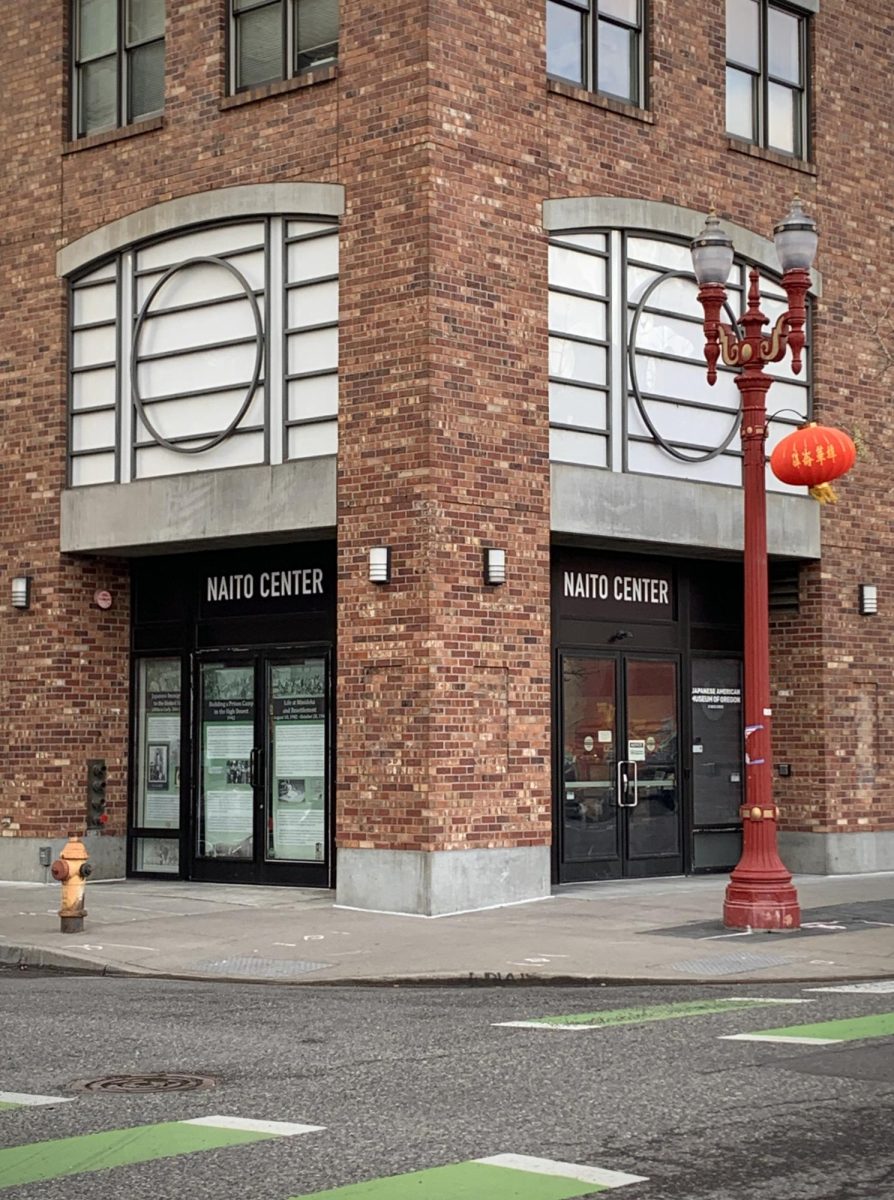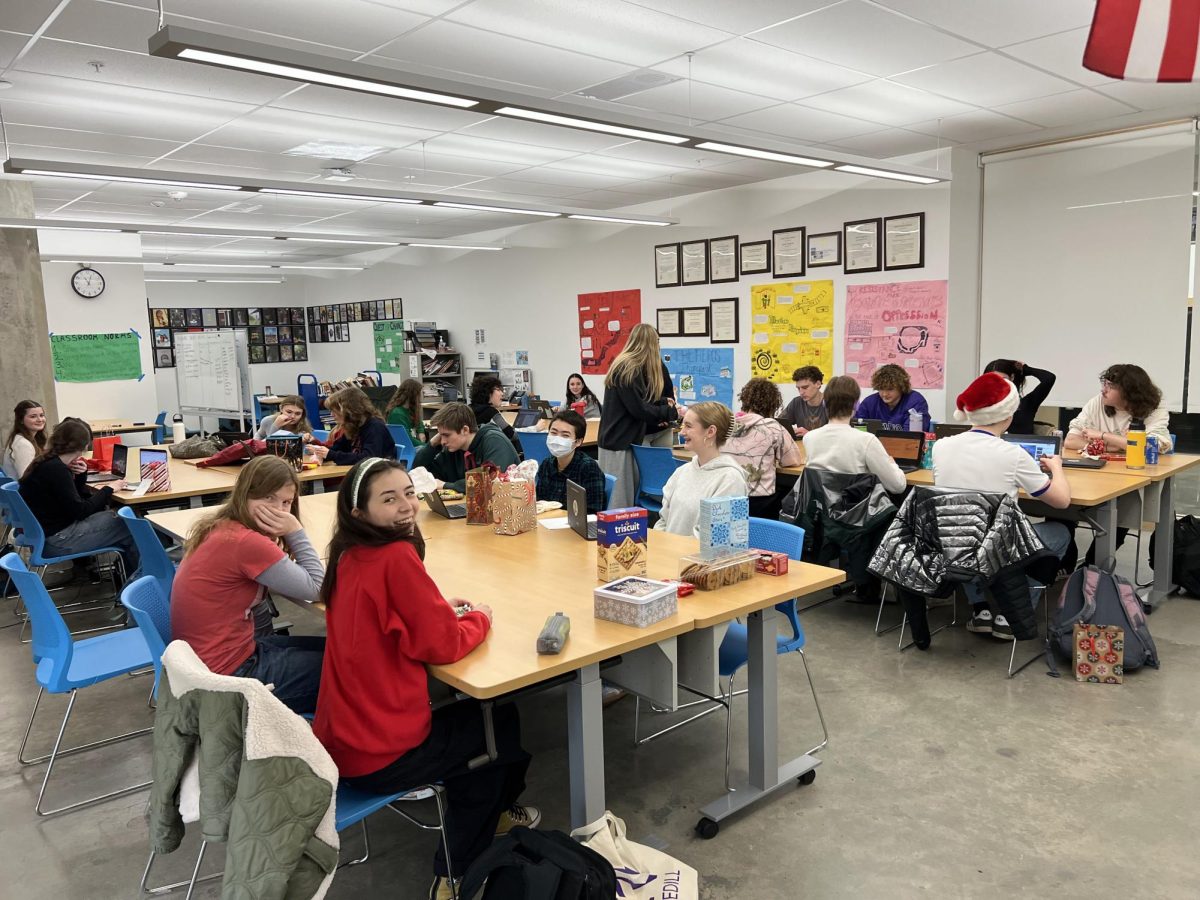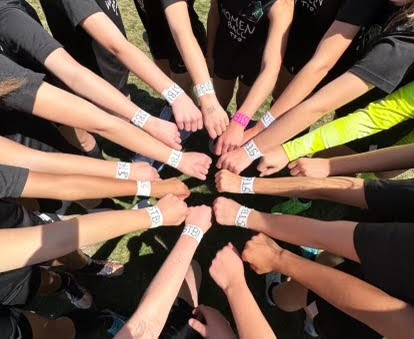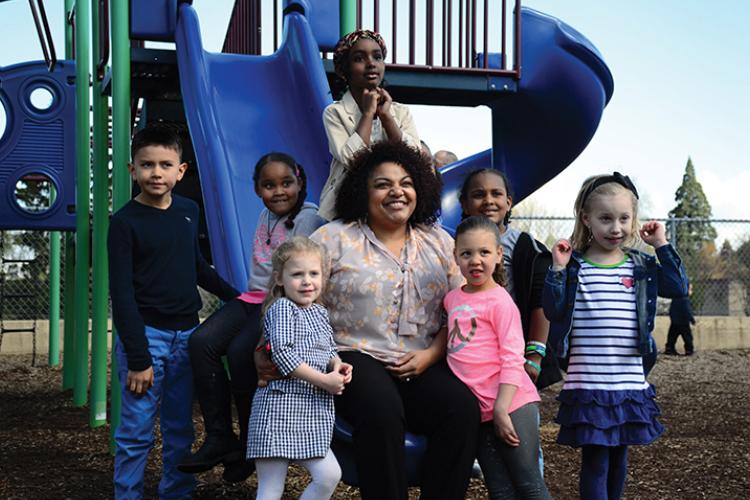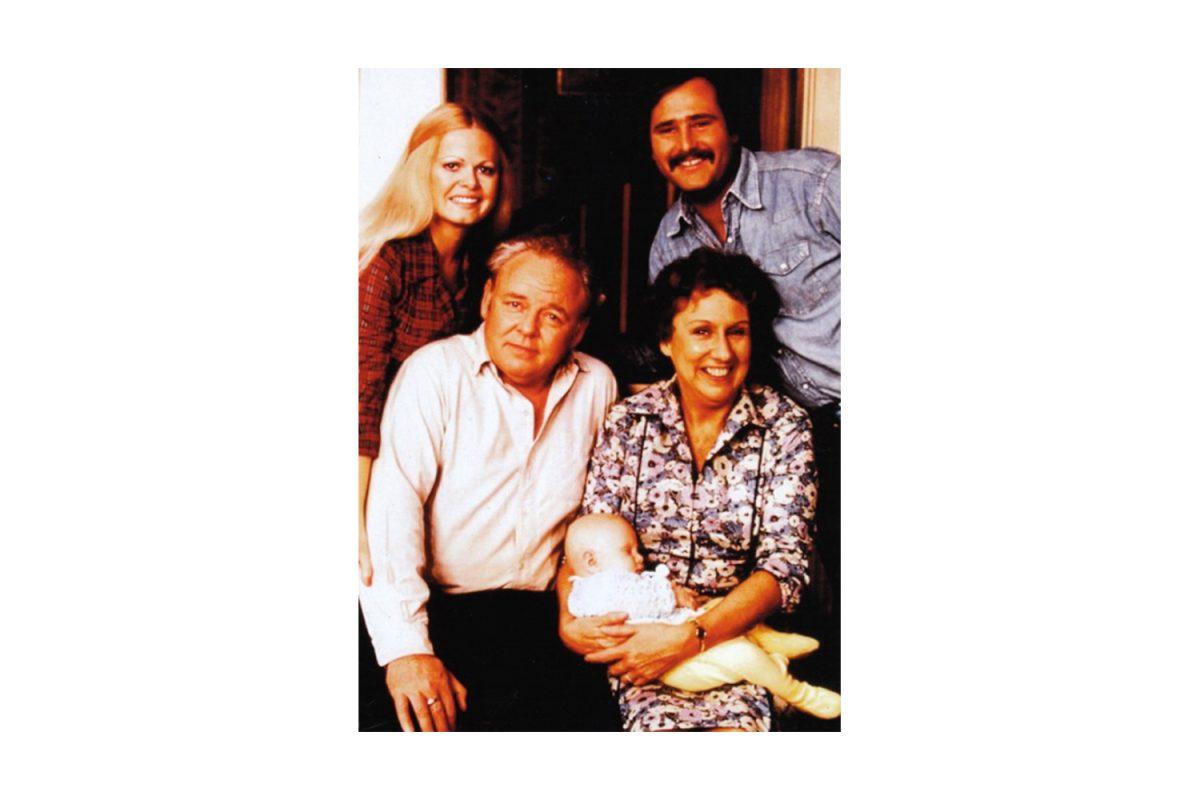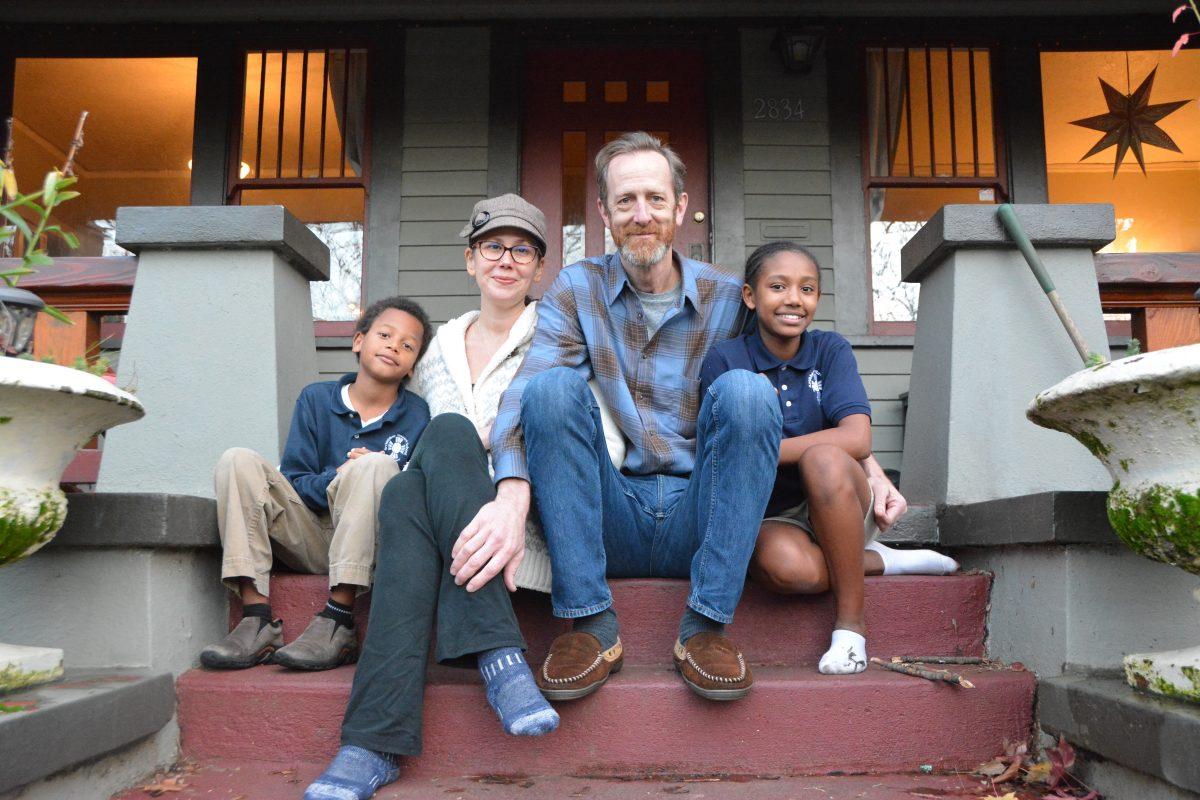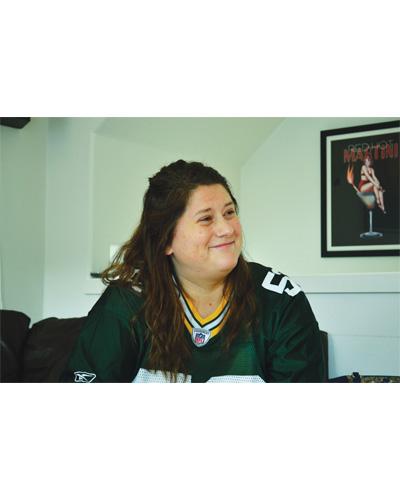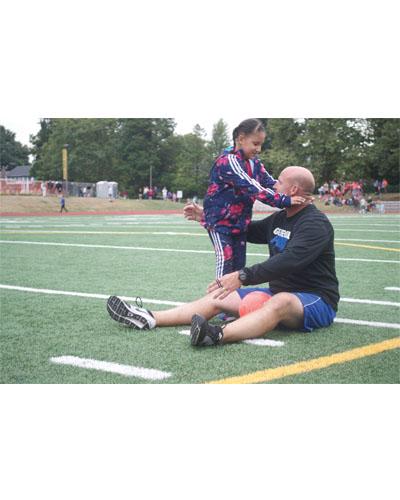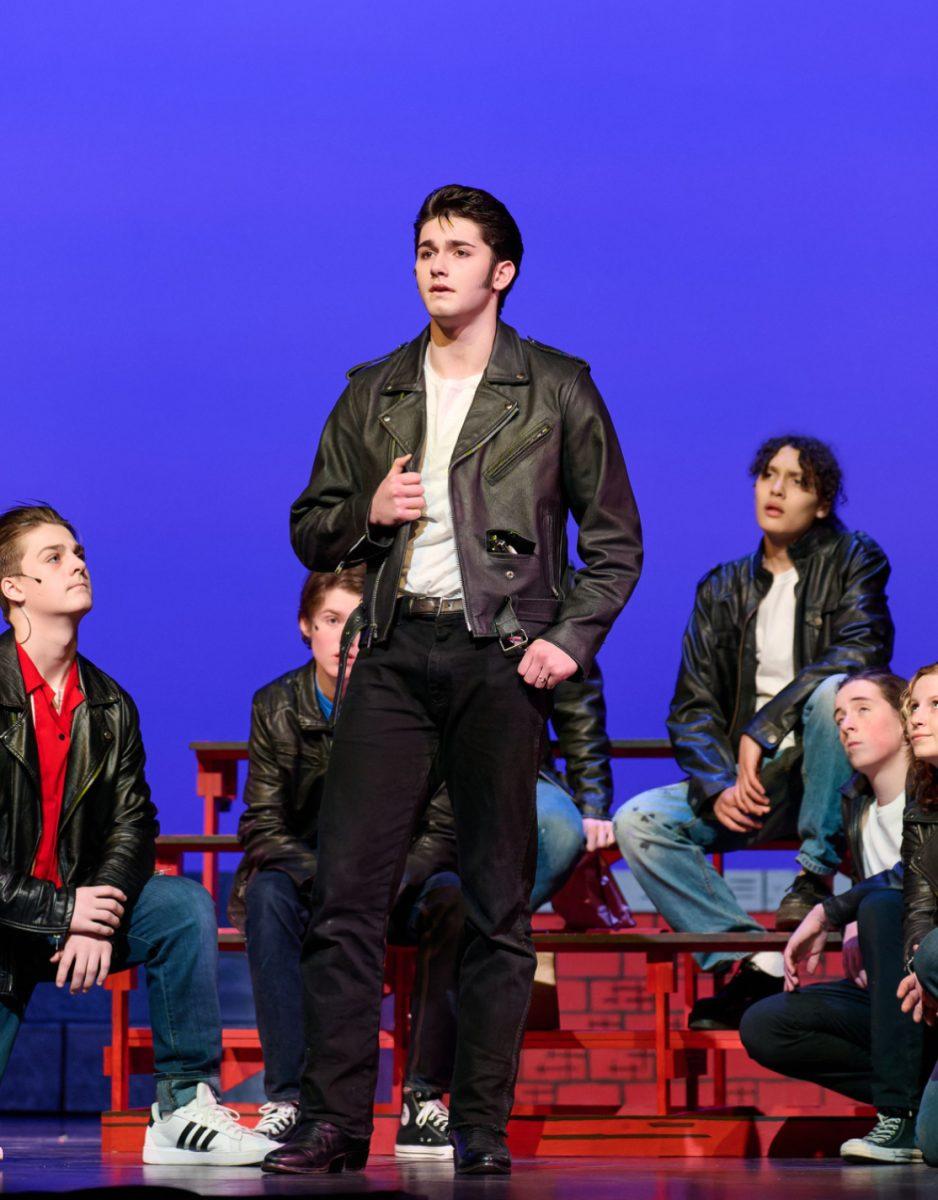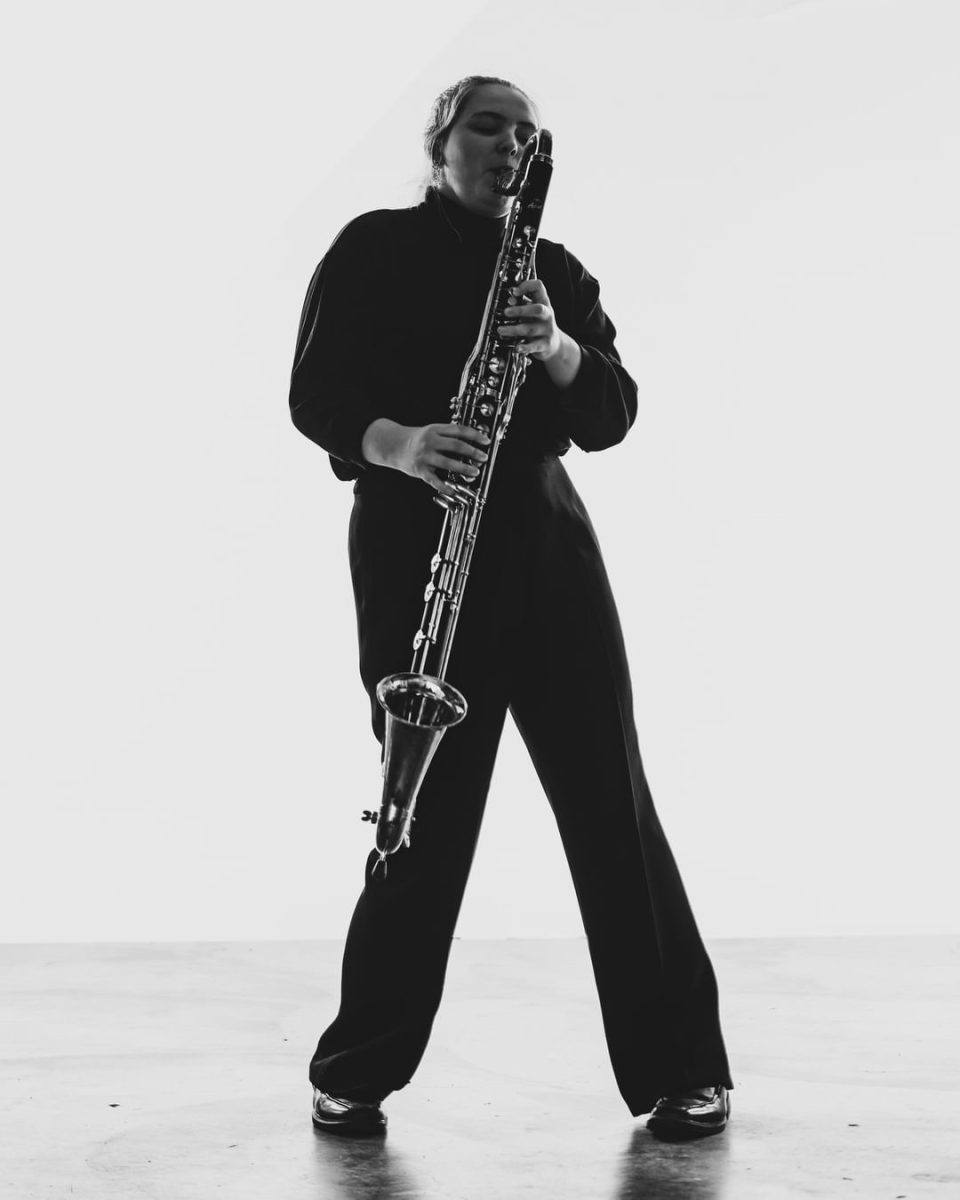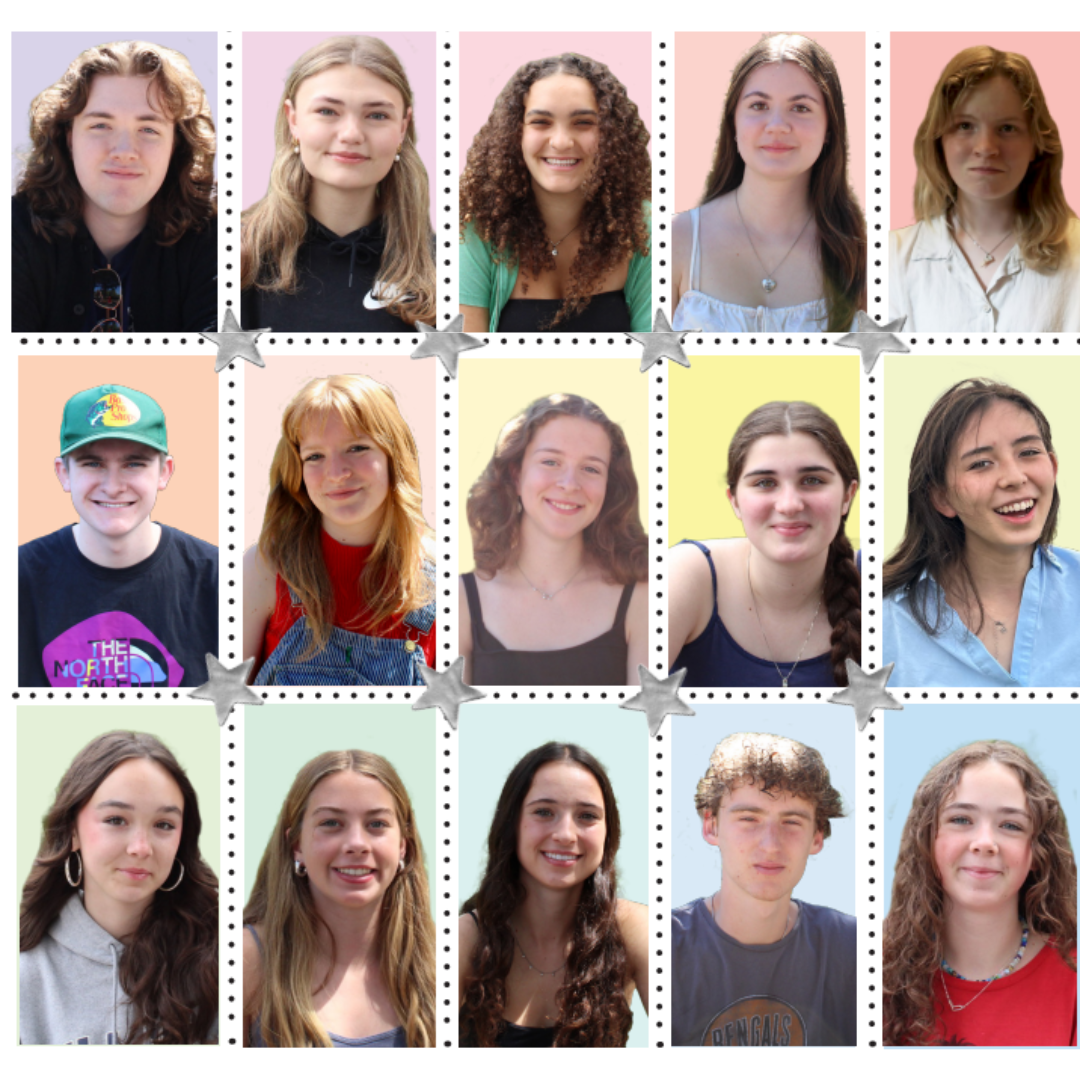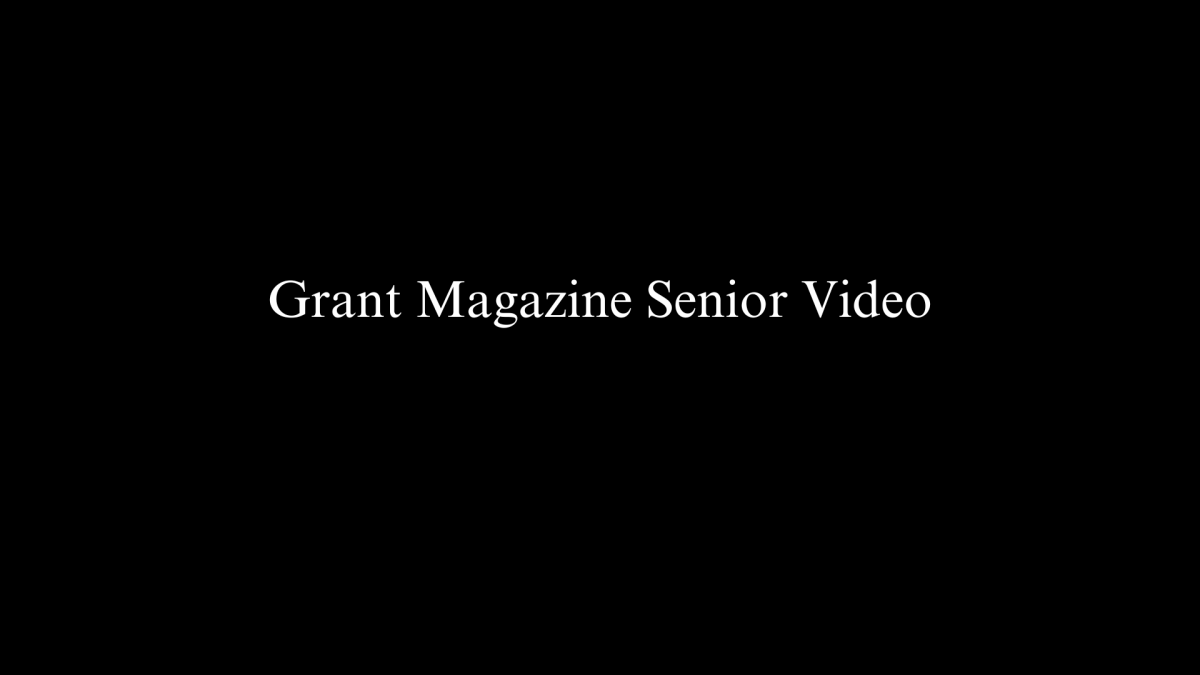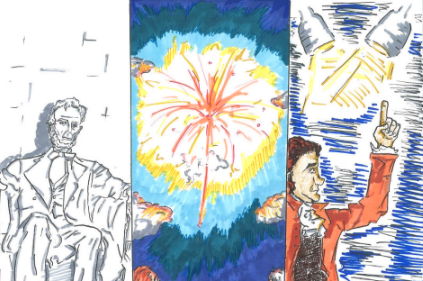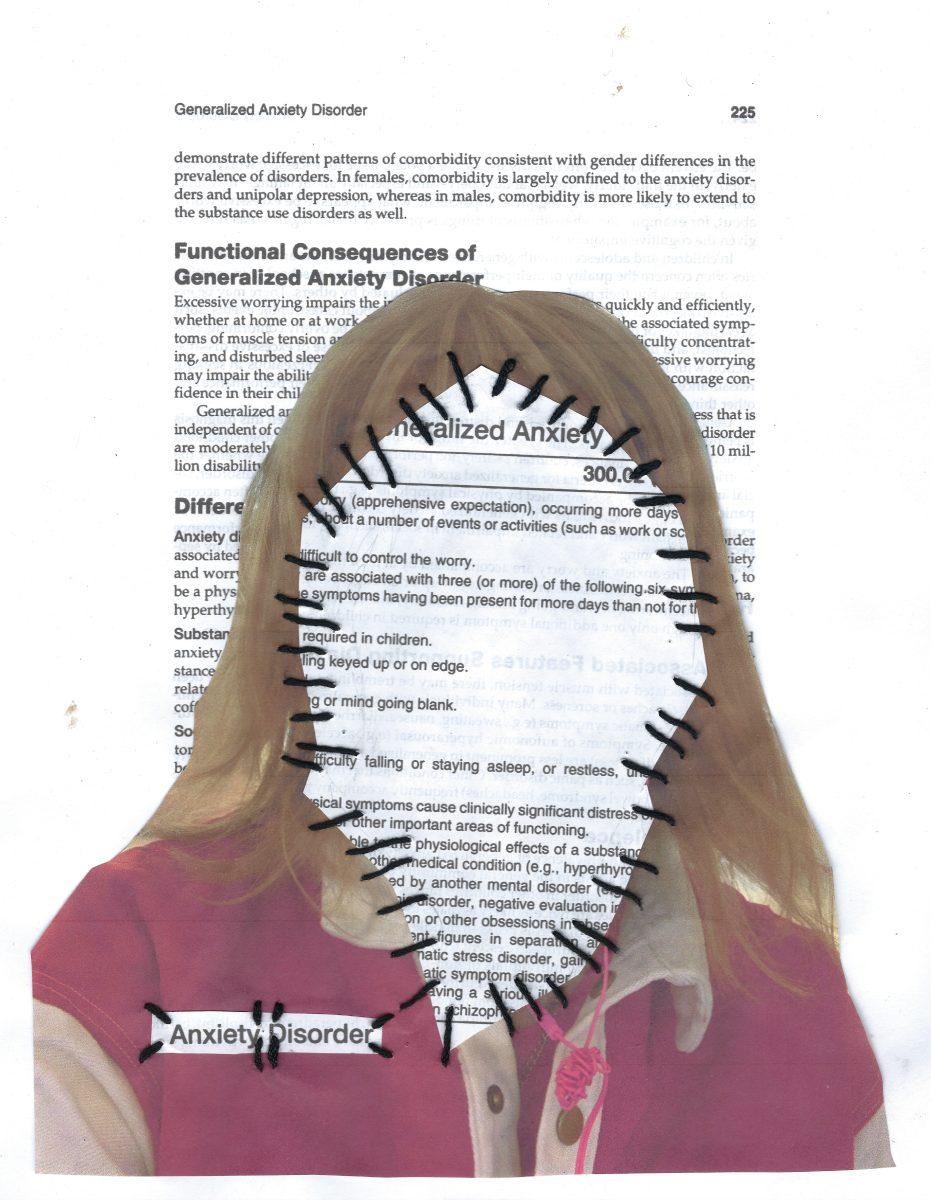The N-Word Special Report: Chapter II
[aesop_parallax img=”https://grantmagazine.com/wp-content/uploads/2016/02/giphy-2.gif” parallaxbg=”on” caption=”
Turning Back the Pages
To understand the power and magnitude of the N-word, you can’t ignore history.
By Blu Midyett and Molly Metz
” captionposition=”bottom-left” lightbox=”off” floater=”off” floaterposition=”left” floaterdirection=”up”]
Renee Anderson spent 11 years teaching math at Grant High School and fought hard to help thousands of students navigate the world of mathematics. As one of the few black classroom teachers at Grant, she clearly understood the achievement gap students of color face every year and has her share of stories around race in the classroom.
Her view on the N-word was shaped from a young age and is absolute: it’s a word best left in the past.
It was 1963 when then Renee Wilkerson hopped on a bus in Menlo Park, Calif., to her first day of fifth grade at an all-white elementary school. Like many other school districts across the nation at the time, black students were bused into white neighborhoods to integrate schools as part of federal law.
Anderson remembers entering a class full of white faces and a teacher who refused to speak to her. The teacher boldly announced to the class that she wasn’t going to teach the “nigger girls,” pointing to her and another black student. They were forced to sit at the back of the room and didn’t receive any of the books that the white kids read.
“I don’t even remember the word before fifth grade,” Anderson recalls. “I knew it wasn’t nice the way she said it. She wouldn’t give us any books. She wouldn’t look at us.”
At that moment, a little girl’s perspective on a loaded word was seared into her mind, and it stuck. To Anderson, there’s no escaping the long and painful history that the N-word has in this country.
“When that teacher used that word for me, she wasn’t being nice,” says Anderson, who retired from Grant in June 2011. “She was trying to put us down. When the word is used for when masters were talking to slaves, they weren’t being nice. They weren’t saying, ‘Oh you’re just my favorite worker.’ It wasn’t a nice word.”
[aesop_character img=”https://grantmagazine.com/wp-content/uploads/2016/02/17-Jamestown.jpg” name=”1609″ caption=”The first written account of the N-word is used towards African slaves in America.” align=”left” width=”400px”]
In American culture, the N-word is rooted in a racist past, one that many know little about. Its origins are generally left alone in school classrooms and dialogue around how it’s used today is rare. One thing remains certain: the word has been used openly to oppress black people for centuries.
But today, there is no clear consensus on what the word really means.
“Every time that word is said, it does have a reverberation and a very painful one,” says Roberta Hunte, an assistant professor of Black Studies at Portland State University who is black.
The N-word’s roots are tied to the beginning of slavery and while it has long been considered a hateful word, it has lasted over time. Today, many of its references come in songs, movies and other entertainment venues, and its power has been diminished in the minds of some, especially young people.
That, many adults say, comes from a lack of understanding about the history.
“This word is used, but only talked about when something bad happens,” says Grant’s Restorative Justice Coordinator Marty Williams, who is African American. “They aren’t really talking about why they need to be educated about this, why it means what it means, and why you should or shouldn’t use it.”
Neal Lester, a professor of English at Arizona State University who is African American, teaches an entire course devoted to the N-word. For him, the importance is not in the definition of the word, but in looking at how it has been used in the past.
“My approach to history is not, ‘In 1892, this happened; in 1913, this happened,’ because it’s all history,” he says. “It was all contributing to the discourse on American race relations, not just the word itself but the context it exists in. It’s not the six letters that make up the word. It’s what the letters together have come to signify. There is not a quick definition.”
Looking back to the beginnings of the word and understanding what fueled its evolution might bring us closer to understanding the role it plays in society today. “I don’t think it’s something to shy away from,” says Hunte. “It’s a part of our history and, in many ways, it’s a part of our present.”
• • •
In 1619, the first slave ships arrived in Jamestown, Virginia. The English settlers who manned the ships brought with them dozens of slaves. Written accounts show that settlers called slaves “negar” and intended for it to be derogatory.
Jabari Asim is the editor-in-chief of Crisis Magazine, the official publication of the National Association for the Advancement of Colored People. He’s also the author of the book “The N Word.” He says he found in his research for the book that the word was used in a way to hold a powerful sway over slaves.
“There is no evidence to suggest that it was ever a race neutral term,” Asim says. “Black people or white people, it was meant to convey a certain degree of sub-humanity from the very beginning.”
[aesop_character img=”https://grantmagazine.com/wp-content/uploads/2016/02/18-Hosea-Easton1.jpg” name=”1837″ caption=”Abolitionist activist Hosea Easton writes “A Treatise on the Intellectual Character and Civil and Political Condition of the Colored People of the United States: And the Prejudice Exercised Towards Them.” He describes the N-word as an “opprobrious term, employed to impose contempt upon (blacks) as an inferior race.”” align=”right” width=”400px”]
The etymology of the word is where it starts. In Latin, negro means black. Asim and others say many derivatives developed from the original spelling as it spread across other languages. The word we now know as “nigger” came from one of those derivatives.
“What tends to happen is over the years and with differing geographical locations, people may start to change the way that they say a certain word,” says Shirley Jackson, chair of the Black Studies Department at PSU. “Over time, it evolved into a more phonetic spelling.”
This phonetic spelling is often traced back to the South, where heavy accents created a new pronunciation. That pronunciation was routinely used to describe African slaves during a time when plantation owners and others began to procure millions of Africans, beginning in the 1600s. Slave narratives dating back to that era have been found to use the word to describe other African slaves.
“They weren’t saying it as brother or friend, ever,” says Asim. “The earliest black people writing about the use of the word very early on have already condemned it as a pejorative that didn’t in any way reflect black identity or the black experience.”
By the 1700s, use of the word had spread, mainly to push the belief that blacks were a subspecies of human. Many scientists and philosophers argued that Africans were biologically different and intellectually inferior to whites, citing scientific evidence that wasn’t valid.
“It was used synonymously with slaves because slaves became a representation of inferiority,” says Lester. “It was a naming, but it wasn’t a naming that allowed for any personal identity.”
As white Americans encountered different ethnic groups, the word was applied to other cultures that were also viewed as inferior to whites. For example, the phrase “‘white nigger” was used to describe some Jewish people.
“It’s not about a specific identity, a racial identity or racial profiling. It’s about anybody that can be insulted by connecting them with anyone that is African American or black,” says Lester.
[aesop_character img=”https://grantmagazine.com/wp-content/uploads/2016/02/19-Huckleberry-Finn1.jpg” name=”1884″ caption=”Mark Twain releases his book “The Adventures of Huckleberry Finn.” The novel uses the N-word 219 times and continues to draw scrutiny for its repeated use.” align=”left” width=”400px”]
“Jews have been called the N-word, so this is something that is beyond a kind of rational explanation as for why it causes a response from people.”
Advertisers, playwrights and authors began to capitalize on the negative racial connotations of the word in the mid-1800s, using it extensively in minstrel performances where actors used blackface makeup. The N-word appeared on hundreds of food and cleaning products. It began to fill American households as popular culture expanded.
“You have things like Nigger Hair tobacco, Gally Nigger banks and popular in white middle class houses was a collection of sheet music called ‘Nigga Songsters,’ which are full of racist songs that people could gather around a piano and sing in the parlor,” says Asim. “By the 1920s, the word was everywhere.”
• • •
During the civil rights era, the N-word was a regular weapon used by law enforcement and racists in the South. With everything from the death of 14-year-old Emmett Till to the assaults of the Freedom Riders, the word was used like venom.
Lynchings and other forms of violence claimed the lives of thousands of black men and women, who were also victims of the word. The African-American community began to organize and speak out.
[aesop_character img=”https://grantmagazine.com/wp-content/uploads/2016/02/ten-little-n.jpg” name=”1939″ caption=”Author Agatha Christie publishes “Ten Little Niggers.” The novel was later renamed “And Then There Were None.”” align=”right” width=”400px”]
Paul Coakley, a retired Portland Public Schools principal who often substitutes for administrators at Grant, says he began following the Civil Rights Movement like a fan follows a sports team. He aspired to be like his older cousins who were part of one of the first peaceful sit-ins in Tennessee.
“They were attacked, hit, beaten, spit up on, all kinds of things,” says Coakley, who was raised by an uncle in Tennessee. “But all of that…people were willing to take just to show that they were equal in the eyes of the law, in the eyes of man and in the eyes of our country.”
For Coakley, the demeaning qualities of the word stood for something much greater than just an epithet. It represented the inequalities that the black community faced. “That word was used as a word to say that African-American people were less than and were not as good,” says Coakley. “If you forget your history, then you’re doomed to repeat it, so it’s very important that we teach young people and all people about their history.”
But for some, the word has negligible meaning in a conversation about race. With a disproportionate number of blacks in prison, a huge achievement gap between minority and white students and with the high number of police shootings of unarmed black people, some say there’s more to worry about than the use of a word.
Karl Acker is a resource specialist at Grant who is black. He grew up in New Orleans in the 1970s and used the word openly. “It was a term of endearment,” he recalls. “We used it as code to get over on the teachers, to say some stuff to each other in a tone using different words…In the neighborhood that I grew up in, eating and surviving were high priorities; words being used were very, very low priority.”
It was a time that saw Americans of all races open their eyes to what was happening to Black America. And the negative connotations associated with blackness in the early 1970s began to take a radical shift nationwide. “Black is beautiful” became a heralded mantra.
[aesop_character img=”https://grantmagazine.com/wp-content/uploads/2016/02/21-Eeny-Meeny2.jpg” name=”1950-1970″ caption=”The line “catch a nigger by its toe” is gradually replaced with “catch a tiger by its toe” in the nursery rhyme, “Eeny Meeny Miny Moe.”” align=”left” width=”400px”]
Movies and television shows depicting black characters were developed. One movie, “Three the Hard Way,” depicted three black characters who saved the black race from a group of white supremacists. Many of the films and shows during this era used the N-word.
For some, this gave the word a new meaning and handed the power of it to the black community. But since the entertainment was aimed at a black audience, it rarely reached the white mainstream.
Using the word “was often done in those films with a bit of self-awareness, occasionally a wink to the camera almost, a heavy dose of irony,” says Asim. “They were saying, ‘We’re going to challenge the status quo. We’re going to challenge whatever the prevailing message is,’ and some of it was done through language.”
It wasn’t until a young black comedian named Richard Pryor started to crack jokes that white audiences began to laugh along. With the release of comedy albums like “Bicentennial Nigger,” which won a Grammy, Pryor’s profuse use of the N-word was something all of America was listening to.
At Grant, the culture was no different.
Cynthia MacLeod serves as assistant director of equity professional development for Portland Public Schools. She remembers moving from Texas to Portland in the 1960s and hearing the word in the halls of Grant.
“I had been taught that that word was derogatory and hurtful, and that it was something that white people said to black people,” says MacLeod. “I was not accustomed to people of color, African Americans, using it with each other in a casual manner. First time I heard it…I held my breath because I thought, ‘Oh my gosh something terrible is about to happen.’”
But nothing did, and the word became normal to MacLeod as her years at Grant continued. She graduated in 1969. The different meanings behind the word and a segregated culture within the school created a racial divide. MacLeod remembers rising pressure between the small black population and the majority white school.
[aesop_character img=”https://grantmagazine.com/wp-content/uploads/2016/02/22-NWA1.jpg” name=”1988″ caption=”NWA a.k.a “Niggas With Attitude” release the pivotal album “Straight Outta Compton,” featuring songs like “Fuck Tha Police” that use the word profusely. Some cite songs like these as productive uses of the word in music.” align=”right” width=”400px”]
That pressure continued in later years. Dylan Leeman, who is white, now teaches English at Grant. He remembers attending the school in the late 1980s and early 1990s. “There was a lot of racial tension at Grant when I went there…integration was pretty new,” he recalls. “I think the white kids…were still really resistant to black kids at Grant when I was here.”
Leeman remembers hearing the word frequently in the halls and recalls the emergence of rival gangs – both black gangs and Skinheads – fueling the tension.
When he heard two female friends use the word openly with their Skinhead boyfriends, Leeman made it his mission to spread what they had said around the entire school. The two girls ended up transferring out of Grant.
• • •
When Leeman returned to Grant as a teacher in 2001, he taught African-American Literature and chose to use the word. “I just said it because I believed that I was trying to sort of create a post-racial world,” he says. “I made my classes use the word. I said, ‘We’re just gonna use the word. It’s a lit class. We’re just gonna. Get over it.’ And I regret that.”
Today, he allows students in class to simply say “N” when it comes up in a book or writing.
For Renee Anderson, the memories of Grant are filled with students who used the N-word in the halls and around school. But in her classroom, the word was strictly forbidden.
Anderson still actively participates in race conversations at Grant. Her motivation, she says, comes from her faith in the future.
[aesop_character img=”https://grantmagazine.com/wp-content/uploads/2016/02/23-Robert_Byrd1.jpg” name=”2001″ caption=”Former member of the Ku Klux Klan, Senator Robert Byrd uses the term “white nigger,” a common derivative of the N-word used against white people in an interview with Fox News.” align=”left” width=”400px”]
“When I’m old and gray, those are the folks that are going to be voting on what’s going on at Grant,” Anderson says of today’s students. “I want to graduate people who are concerned citizens. Concerned not about just the Grant community, but concerned about what happens in the Portland metro area.”
Today, Anderson worries that the dwindling number of black staff at Grant will have an impact on discussions about race, and that directly affects any conversation around the N-word.
“It’s very important to have a diverse staff because people will know different things, depending on where they come from,” says Anderson. “Some things people will look at very differently (if) they are looking through a different lens and may not think that an issue is important because of their background.”
Marty Williams, the restorative justice coordinator, wants people to simply understand and have empathy for differing points of view. But the key, he says, is knowing your subject matter and fully grasping its impact.
“Before you teach something,” Williams says, “get education around it because the word holds a certain sensitivity to it to some groups. It can be either traumatic, it could be anger or it could be where it’s just a conflict of the word, period. I think it’s more about the education of the word…‘This is what this word is and this is where it came from. What is your opinion on it?’”
[aesop_character img=”https://grantmagazine.com/wp-content/uploads/2016/02/GYI0000472426.JPG.jpg” name=”2007″ caption=”The NAACP holds a symbolic funeral for the N-word in Detroit. They bury a coffin adorned with black flowers that represents the word.” align=”right” width=”400px”]
Asim says he doesn’t think banning the word is a likely option. Doing so, he says, would further stifle conversation at a time when racism needs to be put under the spotlight.
“It’s really naïve and sort of ahistorical” to think the N-word will just go away, he says. “It’s an unwillingness to confront the reality of racism. I think the only way the word could exist, as a race-neutral term, is dependent on the elimination of racism, which I don’t see ever occurring.” ◊
Sophie Hauth and Joshua Webb contributed to this story.

